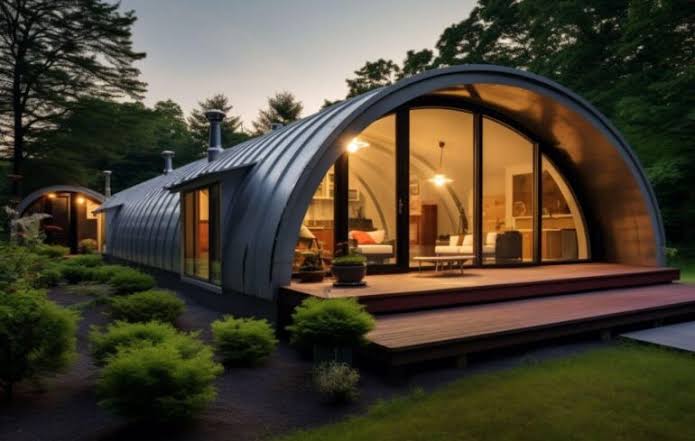Nestled within the annals of history lies a humble yet revolutionary architectural marvel—the steel Quonset building. Initially designed to meet the pressing needs of wartime infrastructure, these semi-cylindrical structures have transcended their military origins to become versatile solutions embraced across diverse industries today. From their historical significance in wartime efforts to their contemporary relevance in agriculture and commerce, a steel quonset hut continues to captivate with their adaptability and enduring appeal.
1. A Testament to Military Ingenuity:
During World War II, the military sought rapid, cost-effective solutions to accommodate soldiers, equipment, and supplies. The steel Quonset structure emerged as a remarkable innovation, offering a prefabricated, lightweight structure that could be quickly assembled and transported to various theatres of war. Its semi-cylindrical design provided strength and stability while minimizing materials and construction time—a testament to military ingenuity in adversity.
2. Pioneering Post-War Reconstruction:
Following the war, surplus Quonset huts found new life in post-war reconstruction efforts, serving as temporary housing, storage facilities, and community centres. Their affordability, versatility, and ease of assembly made them indispensable in rebuilding war-torn regions and accommodating displaced populations. Quonset buildings became symbols of resilience and resourcefulness, embodying the spirit of recovery and renewal in the aftermath of conflict.
3. Agricultural Advancements and Innovation:
Steel Quonset buildings revolutionized farming practices in the agricultural sector, offering farmers a cost-effective solution for storage, equipment housing, and livestock shelters. Their spacious interiors and durable construction made them ideal for protecting valuable assets from the elements while maximizing usable space. Today, steel Quonset buildings are vital in modern agriculture, providing farmers with versatile structures that support efficient operations and sustainable practices.
4. Commercial Versatility and Adaptability:
Across commercial industries, steel Quonset buildings have emerged as versatile solutions for a wide range of applications. From retail stores and workshops to manufacturing facilities and distribution centres, these buildings offer businesses cost-effective options for expanding their operations or establishing new ventures. Their customizable designs, quick assembly, and durability make them attractive investments for entrepreneurs seeking to maximize space and optimize functionality.
5. Resilience in Disaster Preparedness:
In disaster-prone regions, steel Quonset buildings have proven resilient and reliable in providing emergency shelter and storage solutions. Their sturdy construction and ability to tolerate extreme weather conditions make them valuable assets in disaster preparedness and response efforts. Whether used as temporary shelters during hurricanes or storage facilities for emergency supplies, Quonset buildings offer communities a versatile and dependable resource in times of crisis.
6. Sustainable Construction Practices:
With growing concerns about sustainability and Mother Nature’s impact, a steel quonset hut has emerged as an eco-friendly alternative to traditional construction methods. Their modular design and prefabricated components minimize construction waste and energy consumption, while their durability and longevity reduce the need for frequent maintenance and replacement. As sustainable construction practices gain traction, steel Quonset buildings are poised to play a pivotal part in meeting the demands of a more environmentally conscious future.
Conclusion:
From their humble origins as military barracks to their contemporary relevance in diverse industries, steel Quonset buildings are enduring symbols of innovation, adaptability, and resilience. Their historic significance as wartime structures has evolved into a legacy of versatility and utility, with applications spanning agriculture, commerce, disaster preparedness, and sustainable construction. As humans navigate the complexities of a rapidly changing world, steel Quonset buildings serve as a testament to the timeless principles of efficiency, ingenuity, and practicality—a legacy that continues to shape the human-built environment and inspire future generations.





